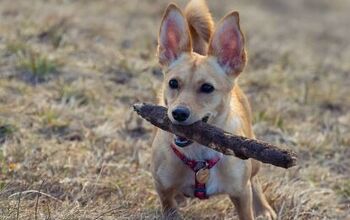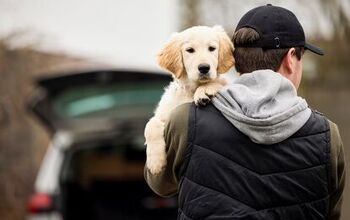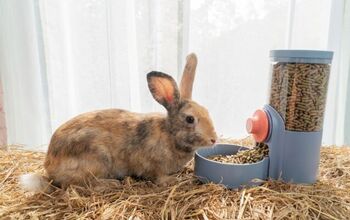Japanese Chin


About Japanese Chin
The Japanese Chin is one of the most unique-looking and instantly recognizable dogs on the planet. After all, how could you overlook that clear white-and-black coat, the tiny head, and bug-eyes? Whether or not this kind of dog is the one that’s up your alley is another matter entirely; what’s important here is that the Japanese Chin is a breed of toy dog that many people have not only seen, but many people have heard of.
But is this dog really the type of companion for you and even your family? Like many toy breeds, the Japanese Chin can be cute, friendly, and even a little frisky. But there’s more to the story here. Raising a Japanese Chin to have a healthy personality means just as much training and effort as any other dog. Don’t use its smaller stature as an excuse for less maintenance. If you’re patient, the rewards can be great: a cute, bubbly breed of dog that reminds us that not every single classic breed comes from the United States or Europe.
The Japanese Chin can be cute, friendly, and even a little frisky.
Like the Pug, a similar-looking and Asian-originated breed, the Japanese Chin has a history that predates many of the breeds we’d consider to be “classic” today. Although the first origins of the Japanese Chin are subject to some controversy, there’s evidence that it actually originated in China and developed into its more advanced form in Japan. This occurred around the 8th and 9th century A.D., although some history suggests that the true development of this breed occurred around 1,000 A.D.
Bred as lap and toy dogs, the Japanese Chin has had a relatively easy life, and that pedigree shines through in their demeanor even today. They are considered to have some of the most “cat-like” personalities in the entire world of dogs, meaning that they’re not exactly hunting or working dogs. The history of this breed suggests that the Japanese Chin is definitely a domestic breed that should be able to adapt to just about any home, provided proper training.
Pedigree
Although the early history of the Chin is obviously a bit muddled – and this leads us only to speculate on the precise pedigree of the Chin – we do have an idea that the Chin originated in China and took on many of its defining characteristics in Japan. Since the Chin resembles the Pug, we might even speculate on a potential relationship between the two Asian toy breeds – especially considering that both breeds have generally been bred for similar purposes. There is certainly a degree of resemblance between the two breeds.
The Japanese Chin also added to its pedigree over the years, and is considered one of the most “royal” of dog breeds. This is because many people belonging to the Japanese nobility enjoyed having these dogs as lap dogs and companions. The difference between the personality of this dog and other dogs actually led to many Japanese people considering the Japanese Chin to be separate from “dogs.”
Japanese Chin only grows to a weight of around 10 pounds, which means there’s little wiggle room here. Eating too much can easily lead to a Japanese Chin adding more weight than it should have – keep in mind that one pound for a Japanese Chin is 10 percent of its normal body weight. For this reason, make sure you feed a diet full of healthy lean meats for your dog without allowing them to over-indulge.
The Japanese Chin can be pretty independent and relatively friendly to strangers.
Socializing your Chin early on as a puppy will be crucial in its development. It’s a naturally social and friendly breed, so allowing it to grow up in this kind of environment means that it should be able to act on its instincts from an early age. Generally obedient and friendly, you shouldn’t have too much trouble with this toy breed, though you never want to let any toy breed bully you.
Coming in around 10 pounds at a normal weight, the light weight here means that an appropriately small diet should be the norm. Though Japanese Chins may look like they can eat a lot, that doesn’t mean you should feed them that much.
Temperament / Behavior
Considered one of the closest personalities to cats that exists in the dog world, these dogs can be pretty independent and relatively friendly to strangers. If you’re a cat lover who’s looking to compromise with a spouse on buying a dog, you might want to consider suggesting a Japanese Chin as a sort of middle ground.
The Japanese Chin is generally friendly to people it knows, but like any dog it can be a bit hostile to strangers. Be sure to socialize your Chin early.
Avoid keeping your dog in hot temperatures, as you would with many toy dogs. Its odd face can cause breathing problems, as you’ll see in a few other toy breeds as well.
The Japanese Chin lives for around 11 to 15 years.
A generally minimal commitment to exercise: a daily walk should suffice for this breed.
Socializing your Japanese Chin early on as a puppy will be crucial in its development.
The American Kennel Club’s description of the Japanese Chin highlights its personality and aristocratic heritage.
The coat is one of the distinguishing features of the Japanese Chin. It can be grown long and soft, especially if it’s a show dog, and will obviously require a heavy bit of maintenance to ensure that this coat remains clean. Generally these coats will be black and white. There have been Japanese Chins who have been white and red.
Japanese Chins should get a healthy exposure to people to properly socialize it as it is being raised. This will help it to retain a friendly demeanor and general acceptance of strangers.

Amy Tokic, Editor of PetGuide.com, is a passionate animal lover and proud pet parent of Oscar, a Shih Tzu/Chihuahua cross, and Zed, a Japanese Chin. Her love of animals began in kindergarten, when she brought her stuffed dog Snoopy into class with her every day. Now, she writes about her adventures in pet ownership and tirelessly researches products, news and health related issues she can share with other animal enthusiasts. In her free time, Amy loves perusing used book and record stores, obsessing over the latest pet products available and chasing squirrels with wild abandon (a habit attributed to spending too much time with her pooches).
More by Amy Tokic

























